TrailwrightBratt
Active member
Saturday, October 9, Trailwrights and PV SAR worked together on the Artist’s Bluff/Bald Mountain loop. All the waterbars were cleaned to be ready for spring, and the rest of the day’s work was on the Short Circuit relocation.
The first picture shows the start of a sidehill and cribbing. In the picture you will notice the steep hillside where the treadway will be located, but first in order to build a treadway in this location, we must remove the organic duff down to mineral soil, and in this picture, that’s what Hal & Ray are doing.
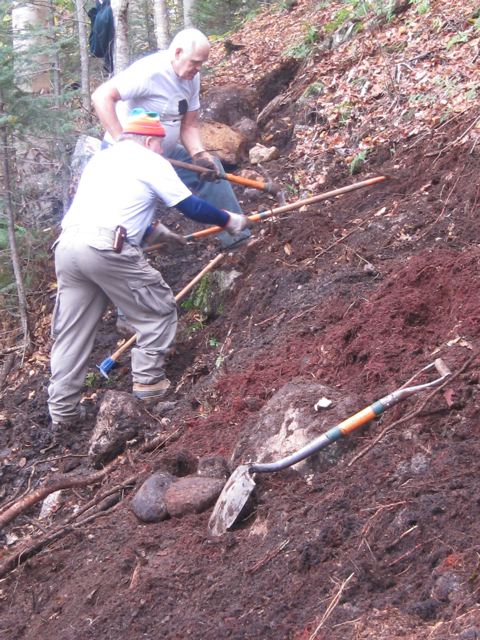
In this picture we are installing the beginning of a rock crib to support the treadway. Notice on Hal’s right the cable is attached to a snatch block which is out of sight and the cable forms an angle called the bite. The location of the snatch block is to keep the rock from being a pendulum down the side, but rather keeps the rock moving away from the edge of the steep part. The anchor then is changed to pull the rock straight to where it will be placed. Where Hal is standing is a dangerous location and the only reason he is there is he just finished taking up the tension that will keep the cable wound on the drum properly. Then he moved immediately out of the location. A bite is formed either overhead if you are highlining or as it is in this picture, and no one should be allowed in the bite area when tension is fully on the rock.
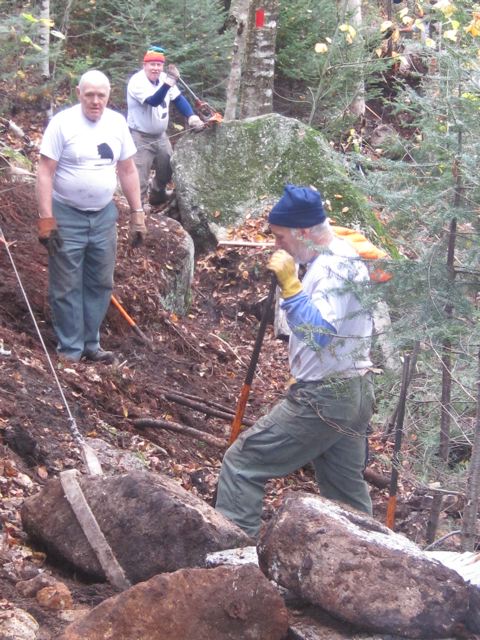
In this picture notice the rock crib built by embedding large rocks in stable mineral soil with the unfinished treadway built above them. On the upper left of the treadway, rock steps have been installed and the sidehill has been graded and is complete to the rectangular step installed at the lower end.

Moving down the trail a rectangular step has been placed at the end of the crib with three temporary blocks to keep the hiker to the inside of the treadway. This section of the crib is not finished and will be completed at a later date.
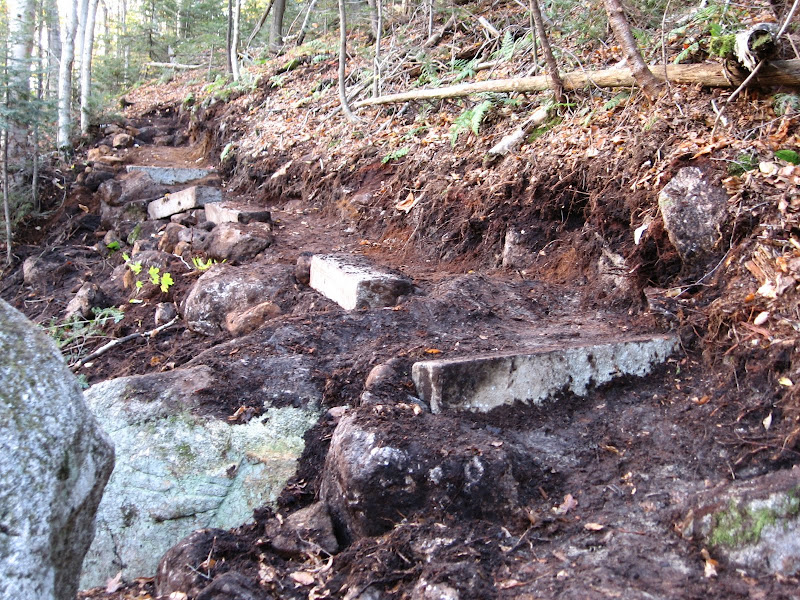
Six steps were installed that appear very natural looking. Looks like Mother Nature put them in place.
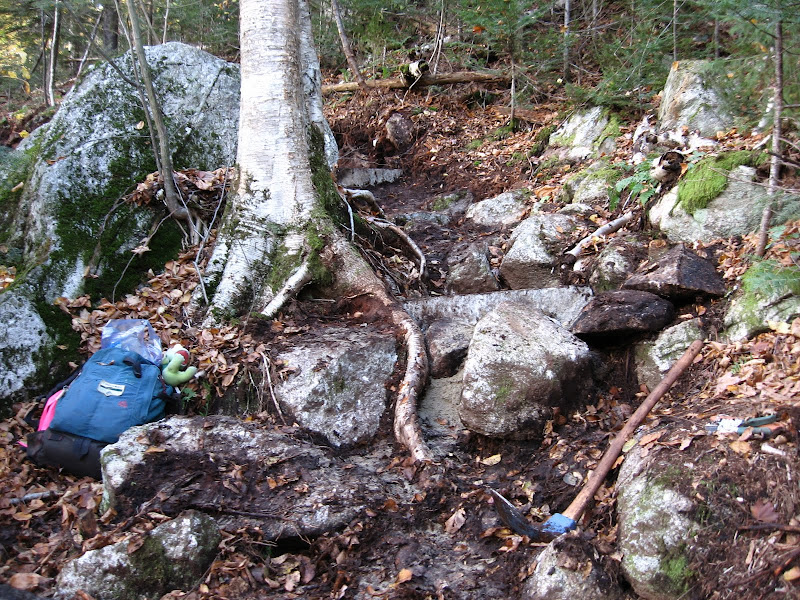
Maneuvering a rock step with bars.
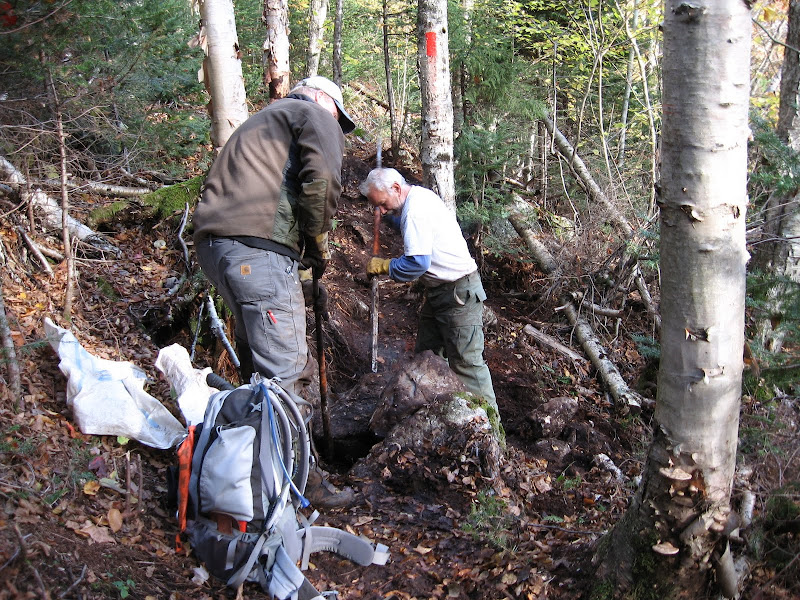
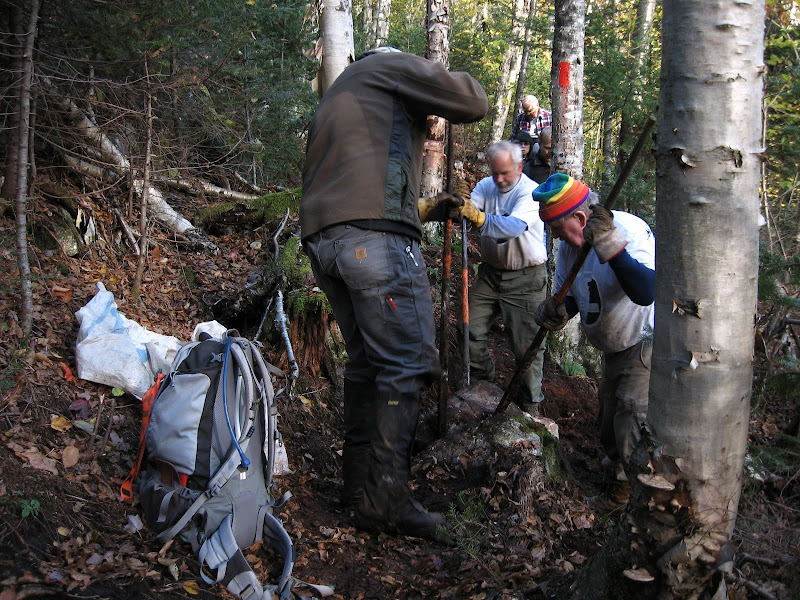
After a day of work well done, Dave is putting away the tools in the Trailwright’s tool trailer.
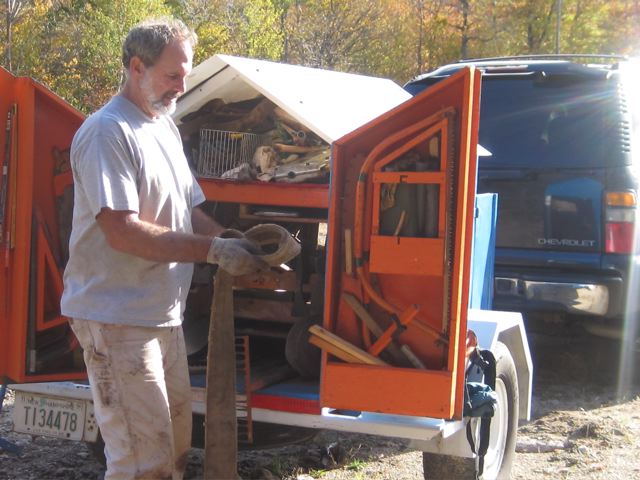
Many thanks to all who came out and helped: Hal, Peggy, Ray, Dave, Mike from Trailwrights and Jeff and Brad from Pemigewasset Valley Search and Rescue.
Total numbers were: Installed 13 rock steps, 15 linear feet of sidehill construction, and 30 feet of rock cribbing with sidehill construction. Seven people worked eight hours each for a total of 56 hours. Hopefully this will encourage others to come out with us next spring for a continuation.
The first picture shows the start of a sidehill and cribbing. In the picture you will notice the steep hillside where the treadway will be located, but first in order to build a treadway in this location, we must remove the organic duff down to mineral soil, and in this picture, that’s what Hal & Ray are doing.

In this picture we are installing the beginning of a rock crib to support the treadway. Notice on Hal’s right the cable is attached to a snatch block which is out of sight and the cable forms an angle called the bite. The location of the snatch block is to keep the rock from being a pendulum down the side, but rather keeps the rock moving away from the edge of the steep part. The anchor then is changed to pull the rock straight to where it will be placed. Where Hal is standing is a dangerous location and the only reason he is there is he just finished taking up the tension that will keep the cable wound on the drum properly. Then he moved immediately out of the location. A bite is formed either overhead if you are highlining or as it is in this picture, and no one should be allowed in the bite area when tension is fully on the rock.

In this picture notice the rock crib built by embedding large rocks in stable mineral soil with the unfinished treadway built above them. On the upper left of the treadway, rock steps have been installed and the sidehill has been graded and is complete to the rectangular step installed at the lower end.

Moving down the trail a rectangular step has been placed at the end of the crib with three temporary blocks to keep the hiker to the inside of the treadway. This section of the crib is not finished and will be completed at a later date.

Six steps were installed that appear very natural looking. Looks like Mother Nature put them in place.

Maneuvering a rock step with bars.


After a day of work well done, Dave is putting away the tools in the Trailwright’s tool trailer.

Many thanks to all who came out and helped: Hal, Peggy, Ray, Dave, Mike from Trailwrights and Jeff and Brad from Pemigewasset Valley Search and Rescue.
Total numbers were: Installed 13 rock steps, 15 linear feet of sidehill construction, and 30 feet of rock cribbing with sidehill construction. Seven people worked eight hours each for a total of 56 hours. Hopefully this will encourage others to come out with us next spring for a continuation.
